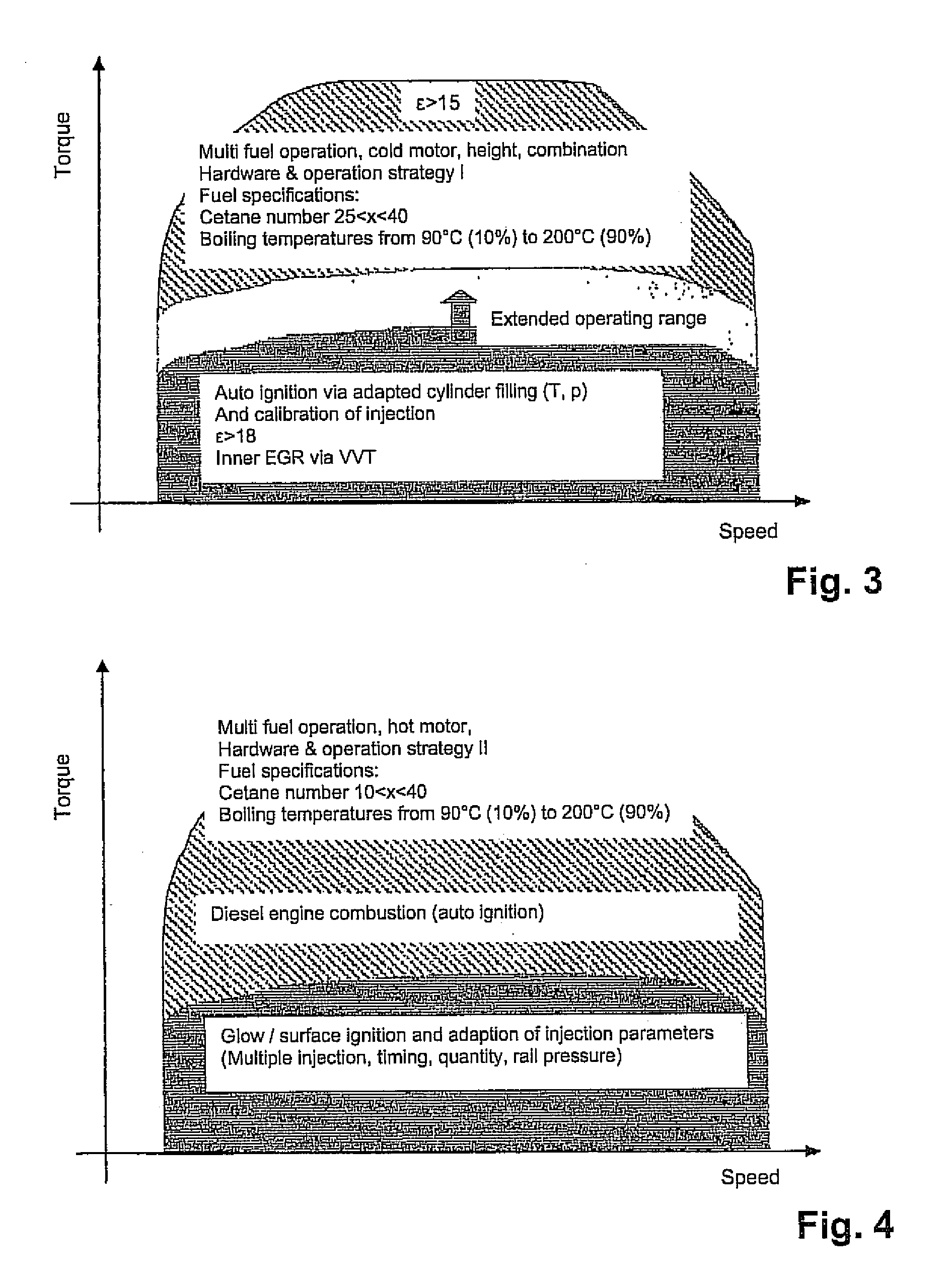Multi-fuel diesel internal combustion engine
a diesel internal combustion engine and multi-fuel technology, applied in combustion process, combustion ignition, angiosperm/flowering plant, etc., can solve the problems of large efficiency loss, high cosub>2 /sub>emission, and not yet completely clear what replacement strategy will be or can be pursued
- Summary
- Abstract
- Description
- Claims
- Application Information
AI Technical Summary
Benefits of technology
Problems solved by technology
Method used
Image
Examples
Embodiment Construction
[0033]In a first construction, FIG. 1 shows an operation of the diesel internal combustion engine in the conventional automatic ignition operation. In the warm engine mode and also in the cold engine mode, only automatic ignition is performed across the entire torque-generating area. This is used especially when the fuel specification has a cetane number of >40 and the fuel has a boiling point above 150-200° C. at 10 vol % and 90 vol %, respectively. This means that the proposed diesel internal combustion engine is in the position to be used as an internal combustion engine operating only in the diesel mode. This control strategy is determined during the characterization of the fuel that is put into the gas tank.
[0034]According to one refinement, it is provided that, advantageously, a fill-level evaluation of the fuel still in the tank is stored in addition to the characterization of the fuel, for example, in a control device of the internal combustion engine. If a different fuel wi...
PUM
 Login to View More
Login to View More Abstract
Description
Claims
Application Information
 Login to View More
Login to View More - R&D
- Intellectual Property
- Life Sciences
- Materials
- Tech Scout
- Unparalleled Data Quality
- Higher Quality Content
- 60% Fewer Hallucinations
Browse by: Latest US Patents, China's latest patents, Technical Efficacy Thesaurus, Application Domain, Technology Topic, Popular Technical Reports.
© 2025 PatSnap. All rights reserved.Legal|Privacy policy|Modern Slavery Act Transparency Statement|Sitemap|About US| Contact US: help@patsnap.com



